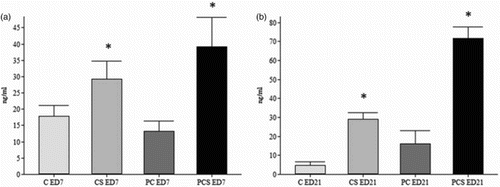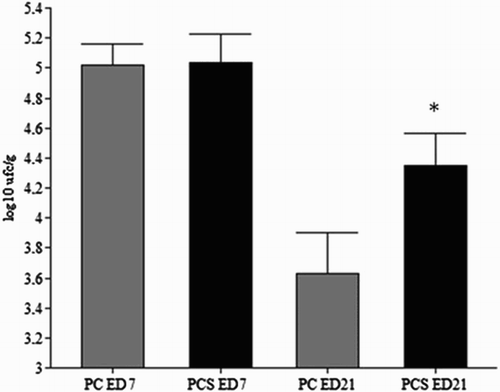Figures & data
Table 1. Markers used for blood cell immunophenotyping.
Figure 1. Effects of cold stress (19 ± 1°C, 6 h/day, from ED 1 to ED7) on corticosterone plasma levels (ng/ml) in SPF chickens studied at 7 (ED7) (a) and 21 (ED21) (b) days old that were infected (Group PCS) or not infected (Group CS) with Salmonella Heidelberg. Data are presented as the mean ± standard deviation (n = 8/group). *P < 0.05 compared to Control (Group C) and positive Salmonella Heidelberg control (Group PC) groups (two-way ANOVA followed by Tukey–Kramer test).

Table 2. Plasma concentrations of EPI and NOR in SPF chickens at ED7 and ED21 challenged or not with cold stress and/or Salmonella Heidelberg (SH).
Figure 2. Effects of cold stress (19 ± 1°C, 6 h /day, from ED 1 to ED7) on Salmonella Heidelberg caecal counts in SPF chickens at 7 (ED7) and 21 (ED21) days of age in both infected groups, with PC kept at a thermoneutral temperature during the entire trial versus the cold stressed (PCS) group. *P < 0.05 compared with the PC and PCS groups (ANOVA followed by Tukey–Kramer test). The mortality of the birds was 20% in the PC group and 40.6% in the PCS group. There was no mortality during the entire trial in the C and CS groups.

